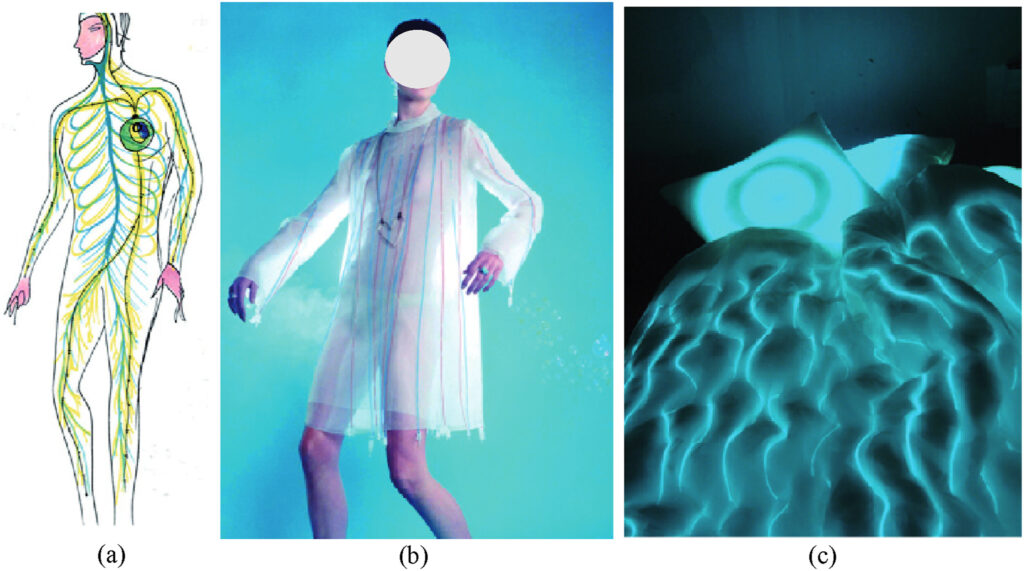
Smart Fabrics 101: Clothing That Reacts to Weather, Movement & Mood
Fashion and function are no longer separate concepts. With the rise of smart fabrics, your clothing can now do more than just make a style statement — it can respond to the world around you. Whether it’s adapting to the weather, tracking your movements, or even syncing with your emotional state, smart textiles are redefining the way we interact with what we wear.
Welcome to the world of smart fabrics: where innovation meets the wardrobe.
What Are Smart Fabrics?
Smart fabrics, also known as e-textiles or intelligent textiles, are materials that have been engineered to sense and respond to environmental conditions or stimuli. These fabrics may be embedded with sensors, actuators, or conductive fibers that allow them to interact with heat, pressure, light, or electrical signals.

There are two primary types:
- Passive smart fabrics, which can sense environmental changes (like temperature or movement).
- Active smart fabrics, which not only sense changes but also respond to them (such as changing shape or color).
Weather-Responsive Clothing
Imagine stepping outside and your jacket adjusts its insulation automatically based on the temperature. That’s the promise of weather-reactive clothing.
Some smart fabrics are designed to regulate body temperature by expanding or contracting based on humidity or heat. For instance:
- Thermochromic fabrics change color in response to temperature changes.
- Phase change materials (PCMs) absorb or release heat depending on your body temperature, keeping you comfortable in fluctuating climates.
Brands are already experimenting with outerwear that can become more breathable in the heat or more insulated in the cold, providing on-the-go adaptability without the need for layers.
Movement-Responsive Apparel
Athletic wear is a natural fit for smart fabric innovation. Motion-sensing garments can track performance metrics like stride, posture, heart rate, and muscle activity — all in real-time.
Examples include:
- Compression garments with embedded sensors that monitor muscle fatigue and help prevent injury.
- Yoga pants that vibrate to correct posture during poses.
- Running shirts that monitor breathing and pulse to optimize training routines.
These garments are especially useful for athletes and fitness enthusiasts who want personalized feedback without bulky gadgets or wrist-worn devices.
Mood and Emotion-Sensing Wearables
Perhaps the most futuristic application of smart fabrics is their ability to detect — and respond to — the wearer’s emotional state. This field, known as affective computing, involves textiles embedded with sensors that measure physiological signals like heart rate variability, skin conductivity, and body temperature to gauge mood.
How can this be used?
- Color-shifting fabrics that reflect your current emotional state.
- Stress-detecting shirts that prompt you to relax or breathe deeply.
- Mood-synced accessories like scarves or bracelets that subtly light up in calming tones when stress levels rise.
While these products are still emerging, the idea of clothing that acts as an emotional barometer is attracting attention across wellness, fashion, and mental health industries.
The Future of Smart Clothing
Smart fabrics are still in their early stages, but the potential is massive. As wearable technology becomes more discreet and fabrics more intelligent, we can expect:

- Everyday clothing that monitors health — detecting dehydration, fatigue, or illness before symptoms even appear.
- Fashion that personalizes itself in real time, adjusting fit or color based on your preferences or social environment.
- Sustainable clothing that adapts rather than needs replacing, reducing fast fashion waste.
Challenges remain, especially around washability, battery life, and privacy concerns. But researchers and designers are working hard to make smart textiles more durable, flexible, and user-friendly.
Final Thoughts
Smart fabrics represent a shift from passive to interactive clothing. No longer just about form and fabric, your wardrobe is becoming a dynamic extension of your body and lifestyle. Whether it’s syncing with your workout, shielding you from a sudden cold snap, or reflecting your mood to the world, these innovative textiles are making clothing smarter — and perhaps, more human.
So the next time you shop for clothes, consider this: What if your shirt could do more than just look good? What if it could think, feel, and respond — just like you?








